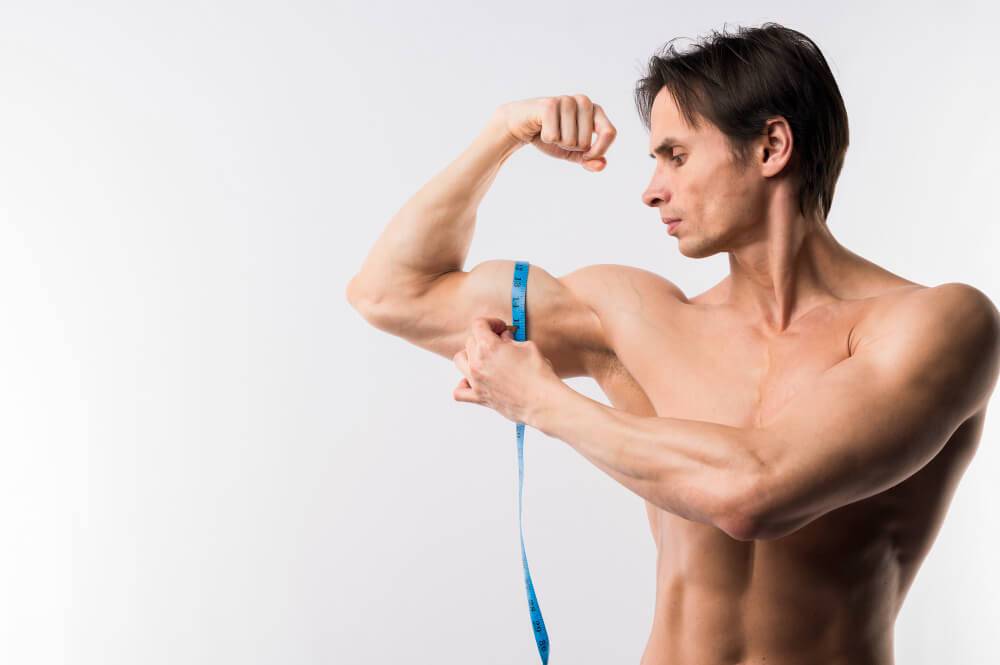Back workouts are a foundational element of any comprehensive fitness routine. They’re essential not only for achieving an aesthetically pleasing “V” taper but also for improving posture, enhancing strength, and preventing injuries.
Cable machines offer a unique resistance that can be particularly effective for muscle growth and definition, making back cable workouts a must-try for fitness enthusiasts, weightlifters, and bodybuilders alike.
Unlock the full potential of your back workout with the 10 best cable back exercises—your guide to achieving a stronger, more defined back. Designed for fitness enthusiasts, weightlifters, and bodybuilders alike, these cable back exercises are tailored to enhance your training regimen by targeting crucial muscle groups in the back.
Whether you’re aiming to sculpt your latissimus dorsi (lats), fortify your rhomboids, or strengthen your lower back, cable back exercises provide the versatility, range of motion, and targeted engagement needed to drive results. Want to know more about back anatomy visit here.
Importance of Back Workouts
A strong back is crucial for more than just lifting heavy weights; it’s the powerhouse that supports your daily movements and stabilizes your core. Whether you’re an athlete or someone looking to improve their overall physical health, integrating back exercises into your workout regimen can lead to significant improvements in performance and wellbeing.

Additionally, a well-developed back can enhance your overall physique, creating a more balanced and symmetrical look. It’s important to note that back workouts should be incorporated into your training routine at least two times a week for optimal results.
In this article, I have listed 10 best cable back exercises, but if you want to know about more exercises, visit this article. They have listed 21 exercises for back.
Benefits of Cable Machine for Back Workouts
While free weights are fantastic for building functional strength, cable machines offer unique benefits when it comes to targeting specific muscle groups. Here are just a few reasons why incorporating cable back exercises into your workout routine is an excellent idea:
- Constant Tension: Unlike free weights, cable machines provide constant tension throughout the entire range of motion. This means that your muscles are continuously engaged and working, leading to a more effective workout.
- Versatility: Cable machines offer a wide variety of attachments and adjustable weight options, making it possible to target different back muscles and vary the intensity of your workouts.
- Isolation: Cable exercises allow for better isolation of specific muscle groups, helping to correct imbalances and improve overall strength.
- Safety: Using a cable machine reduces the risk of injury as it forces you to maintain proper form and technique throughout the movement.
Top 10 Back Cable Workouts
Below, you’ll discover the top 10 back cable workouts that can revolutionize your training routine, alongside tips for executing them with perfect form and technique.
Straight-Arm Pulldown
Muscles Targeted:
This exercise targets the latissimus dorsi. Keeping your arms straight throughout the movement helps isolate the lats, promoting width and growth.
How to perform:
1. Position Yourself: Start by standing in front of the cable machine, feet shoulder-width apart. Select the appropriate weight on the machine and attach a straight bar or rope to the high pulley.
2. Grip: Grip the bar or rope with both hands, using an overhand grip. Your hands should be spaced wider than shoulder-width apart.
3. Execute the Movement: Keeping your arms fully extended and your core engaged, pull the bar or rope down towards your thighs. Focus on using your lats to power the motion, and avoid bending your elbows.
4. Return: Slowly return to the starting position, allowing your lats to fully stretch while maintaining control of the weight.
5. Repeat: Aim for 3-4 sets of 8-12 repetitions, adjusting the weight as needed to ensure proper form.
Benefits:
- The Straight-Arm Pulldown is an excellent exercise for increasing lat width and thickness.
- It isolates the latissimus dorsi, minimizes the involvement of the biceps, and helps improve muscle definition.
- This exercise also enhances overall back strength and can improve posture by encouraging a back and down shoulder position, making it a valuable addition to any back workout regimen.
Seated Cable Row
Muscles Targeted:
Ideal for targeting the mid-back, the seated cable row also engages your lats, rhomboids, and traps for improved thickness and strength.
How to perform:
1. Set Up: Begin by sitting at the cable row machine and placing your feet on the footrests. Ensure the knees are slightly bent to prevent strain. Select your desired weight on the machine.
2. Grip: Hold the handle or attachment (a V-bar provides a good neutral grip) with both hands. Lean slightly forward at your hips, maintaining a straight back, to grab the handle.
3. Pull: Lean back to start the row, keeping your spine neutral. Pull the handle towards your lower abdomen, squeezing your shoulder blades together as you row. Your elbows should go straight back and remain close to your body.
4. Return: Extend your arms back to the starting position, stretching your shoulders forward, and allow your torso to lean forward again slightly at the hips, maintaining a controlled movement.
5. Repeat: Complete 3-4 sets of 8-12 repetitions, focusing on form and the mind-muscle connection.
Benefits:
- Seated Cable Rows are indispensable for developing mid-back density and strength. This exercise improves your posture by strengthening your upper back and the stabilizing muscles around your spine.
- It also enhances scapular retraction and protraction, which are crucial for a healthy shoulder movement.
- The seated position allows for focused targeting of the back muscles, minimizing the risk of lower back strain, making it a safe and effective option for individuals at all fitness levels.
Lat Pulldown
Muscles Targeted:
The Lat Pulldown is a staple exercise in any back-strengthening regimen, focusing primarily on the latissimus dorsi but also engaging the biceps, shoulders, and upper back. A classic exercise for back development.
How to perform:
1. Adjust and Sit: Begin by adjusting the knee pad of the pulldown machine to fit snugly against your legs to prevent lifting off the seat. Sit down and grasp the bar with a wide grip, hands a little wider than shoulder-width.
2. Lean Back Slightly: With a straight back, lean back slightly from your hips. This starting position helps target the lats more effectively.
3. Pull Down: Pull the bar down towards your chest, drawing the elbows towards your sides. Concentrate on squeezing your shoulder blades together at the end of the movement.
4. Return Slowly: Allow the bar to return to the starting position in a controlled manner, fully extending your arms and feeling a stretch in your lats.
5. Repeat: Perform 3-4 sets of 8-12 reps, making sure to adjust the weight to maintain proper form throughout.
Benefits:
- The Lat Pulldown is an efficient exercise for building upper body strength, specifically in the latissimus dorsi, which is essential for a V-shaped torso. It also aids in improving shoulder joint mobility and stability.
- Regularly including the lat pulldown in your routine can lead to an improvement in posture and a reduction in back pain by strengthening the muscles that support your spine.
- This exercise is a versatile movement that can accommodate individuals of various fitness levels by adjusting the weight and grip.
See Also: 9 Best Back Exercises Using Barbell (With Sample Workout Plan)
Cable Pullover
Muscles Targeted:
This unique exercise works the lats and serratus anterior, helping to sculpt a ripped back. It’s also beneficial for improving shoulder flexibility and range of motion.
How to perform:
1. Set Up: Begin by attaching a straight bar or rope to the high pulley of the cable machine. Kneel or sit facing the machine, depending on your comfort and the machine’s design. Grab the attachment with both hands, your grip depending on the attachment type.
2. Starting Position: Extend your arms fully with a slight bend in the elbows to prevent strain. Lean forward slightly from your hips, keeping your spine neutral and your core engaged.
3. Execution: Keeping your arms extended, pull the attachment down in a wide arc until it is level with your thighs. Focus on contracting your lats and pulling with your back rather than your arms.
4. Return Phase: Slowly return the attachment to the starting position in a controlled motion, allowing your lats to stretch fully.
5. Repeat: Aim for 3-4 sets of 8-12 repetitions, with proper form taking precedence over the amount of weight used.
Benefits:
- The Cable Pullover is an exceptional exercise for expanding the lats, creating a wider back, and enhancing the definition between the serratus anterior and the rib cage.
- This exercise also increases shoulder stability and mobility. By emphasizing the stretch and contraction of the lats, it improves both the aesthetic appeal and functional strength of your back, making it a valuable addition to your workout routine.
- It’s particularly useful for those looking to focus on muscle hypertrophy while minimizing the risk of shoulder injuries.
Standing T-Bar Row
Muscles Targeted:
By using the cable machine instead of the traditional barbell, this exercise provides a constant tension on the back muscles, particularly hitting the lower lats and improving overall back density.
How to perform:
1. Positioning: Stand over the T-bar row machine with your legs on either side of the bar. Bend your knees slightly and lean forward from your hips, keeping your back straight.
2. Grip: Grasp the handles of the T-bar row machine. If your machine has different grip options, choose one that feels comfortable and allows for a full range of motion.
3. Lift: Begin the movement by lifting the weight, pulling the bar towards your chest. Keep your elbows close to your body to maximize the engagement of your back muscles.
4. Pause and Squeeze: Once the bar is close to your body, pause for a moment and squeeze your shoulder blades together to engage your back muscles fully.
5. Return: Slowly lower the bar back to the starting position, maintaining control throughout the movement. This ensures that your muscles are under tension for the entire exercise, increasing its effectiveness.
Benefits:
- The Standing T-Bar Row is a powerful compound exercise that targets the majority of the back muscles, including the mid and lower traps, rhomboids, and latissimus dorsi.
- It also engages the biceps, shoulders, and core, making it an excellent choice for improving overall upper body strength. This exercise is beneficial for those looking to enhance their posture, as it strengthens the muscles that support the spine.
- Additionally, its ability to be performed with heavy weights makes it a staple for increasing muscle mass and back density.
Reverse Grip Pulldown
Muscles Targeted:
Targeting primarily the lower lats, the reverse grip allows for a closer grip and a different angle of resistance, stimulating muscle growth in areas that may be underdeveloped from traditional workouts.
How to perform:
1. Setup: Sit at a lat pulldown machine and attach a straight bar to the top pulley. Adjust the knee pad to secure your legs and prevent movement during the exercise.
2. Grip: Use an underhand grip (palms facing you) to grasp the bar, with your hands about shoulder-width apart. This grip targets the lower lats more effectively.
3. Pull Down: With a slight lean back, pull the bar down towards your chest. Focus on driving the movement with your elbows and squeezing your shoulder blades together at the bottom of the motion.
4. Controlled Return: Slowly extend your arms back to the starting position, maintaining control and resisting the weight as you return. This negative phase is just as important for muscle development.
5. Repeat: Complete 3-4 sets of 8-12 repetitions, ensuring to select a weight that allows you to perform each set with proper form.
Benefits:
- The Reverse Grip Pulldown is a variation of the traditional lat pulldown that places additional emphasis on the lower lat muscles, contributing to a more pronounced V-shape of the back.
- This grip variation also allows for greater biceps engagement, making it an efficient exercise for building both back width and arm strength.
- It can help correct muscle imbalances and improve grip strength. Incorporating this exercise into your routine can diversify your back training and stimulate new muscle growth.
Single-Arm Cable Row
Muscles Targeted:
Focusing on unilateral training, the single-arm cable row helps in identifying and correcting muscle imbalances, ensuring both sides of your back are equally strong and muscular.
How to perform:
1. Setup: Position yourself at a cable row station and adjust the seat and chest pad to ensure proper alignment. Select the single-arm handle attachment for the cable machine.
2. Grip and Position: Sit down, planting your feet firmly on the platform, and grab the handle with one hand in a neutral grip. Keep your back straight and shoulders squared.
3. Pulling Phase: Begin by pulling the handle towards your waist, keeping your elbow close to your body. Focus on initiating the movement from your back muscles, not just your arm.
4. Contraction: Once the handle reaches your side, squeeze your shoulder blade towards the spine to engage the back muscles fully. Hold this contraction for a moment.
5. Return Phase: Slowly release the handle back to the starting position, controlling the movement and maintaining tension in your back muscles throughout the return phase.
Benefits:
- The Single-Arm Cable Row is excellent for promoting muscular balance and preventing asymmetries between the sides of the back.
- This exercise also enhances core stability as the body must resist rotation during the rowing movement, providing a beneficial core workout in addition to the back workout.
- Incorporating the Single-Arm Cable Row into your routine can lead to improved posture, increased back strength, and a more visually symmetrical physique.
Cable Face Pull
Muscles Targeted:
While primarily considered a shoulder exercise, the cable face pull also effectively engages the upper back and traps, contributing to improved posture and upper body strength.
How to perform:
1. Setup: Adjust a cable machine to a high position and attach a rope handle. Stand a comfortable distance away from the machine, feet shoulder-width apart.
2. Grip: Grab the rope with both hands, palms facing each other. Begin with your arms fully extended and the rope at eye level.
3. Pull: Pull the rope towards your face, splitting the rope as you move, so that your hands end up on either side of your head. Focus on moving your elbows back and apart, using your rear deltoids and upper back muscles.
4. Pause and Squeeze: At the peak of the movement, where the rope is close to your face, pause and squeeze your shoulder blades together. Make sure to use your upper back muscles to perform the pull, not just your arms.
5. Slow Return: Control the movement as you slowly return to the starting position, keeping tension on the cable.
Benefits:
- This movement targets the rear deltoids, rhomboids, and traps, muscles that are often neglected in standard training routines.
- Regularly incorporating face pulls can lead to improved shoulder stability and mobility, a stronger upper back, and a more upright posture.
- This exercise also helps to counteract the effects of prolonged sitting or standing, making it particularly beneficial for those with desk jobs.
See Also: 9 Best Back Exercises Using Barbell (With Sample Workout Plan)
Cable Deadlift
Muscles Targeted:
A variation of the traditional deadlift, using cables can help those with back issues to perform the movement more safely and with less strain on the lower back.
How to perform:
1. Setup: Stand in front of the cable machine and adjust it to the lowest setting. Attach a straight bar or rope. Place your feet shoulder-width apart, with the cable between your legs.
2. Grip and Position: Bend at your knees and hips to lower yourself down and grab the bar or rope handles. Keep your back straight, chest up, and shoulders back.
3. Lift: Drive through your heels to stand up, straightening your hips and knees, and bringing the bar or rope up with you. Keep the weight close to your body as you ascend.
4. Upper Position: Once you’re standing straight, with shoulders back and chest out, ensure that you’re engaging your glutes and core at the top of the movement.
5. Return: Bend your hips and knees to lower the bar or rope back down to the starting position in a controlled manner, maintaining a flat back and tight core throughout the movement.
Benefits:
- The Cable Deadlift is an effective lower body exercise that emphasizes the posterior chain muscles, including the glutes, hamstrings, and lower back, while also engaging the core for stability.
- It is particularly beneficial for those looking to strengthen their lower back without placing excessive strain on it, thanks to the consistent tension provided by the cable machine.
- This variation can be more accessible for individuals with mobility restrictions or those recovering from injury, offering a safer alternative to the traditional barbell deadlift.
- Incorporating the Cable Deadlift into your routine can lead to improved posture, enhanced core strength, and a more powerful lower body.
Cable Shrug
Muscles Targeted:
Though focused on the traps, cable shrugs also indirectly work the entire back. The constant tension from the cable machine creates a unique stimulus for growth.
How to perform:
1. Setup: Approach the cable machine and adjust it to a height that allows the cable to be pulled without bending over. Attach a straight bar or rope attachment.
2. Grip: Grasp the bar or rope handles with both hands, palms facing inwards. Stand with your feet shoulder-width apart, maintaining a slight bend in your knees.
3. Lift: Begin by lifting your shoulders straight upwards towards your ears, keeping your arms extended and maintaining a slight bend in the elbows. Avoid bending your arms to lift the weight; the movement should come entirely from your shoulder muscles.
4. Pause and Squeeze: At the top of the lift, pause and squeeze your traps for a moment, making the most of the contraction.
5. Slowly Lower: Slowly lower the shoulders back down to the starting position, controlling the weight and resisting the urge to drop quickly.
Benefits:
- The Cable Shrug is targeted at strengthening and building the trapezius muscles, which are crucial for neck, shoulder, and upper back stability.
- Unlike shrugs performed with dumbbells or a barbell, the consistent tension provided by the cable machine ensures that the traps are under continuous load throughout the movement. This can lead to better muscle growth and engagement.
- Regularly performing cable shrugs can also enhance posture, especially for those who spend long hours sitting or in front of a computer, by counteracting the forward shoulder roll.
A Beginner’s Guide to Cable Back Workouts
Starting a fitness journey can be overwhelming, especially when it comes to strength training. However, cable machines offer a versatile and beginner-friendly way to engage in strength training, particularly for those looking to focus on their back muscles. The term “back cable workouts” refers to any back cable exercises that utilize a cable machine to target the muscles of the back, including the latissimus dorsi (lats), rhomboids, trapezius (traps), and the lower back muscles.
These workouts are fantastic for beginners because the cable machine provides a steady and adjustable level of resistance, allowing for controlled movements and minimized risk of injury.
For those new to back cable workouts, here are a few tips to get started:
- Start Slow: Begin with lightweight to get a feel for each exercise and focus on mastering the form before adding more weight.
- Consistency is Key: Incorporate these exercises into your routine 2-3 times a week, allowing for rest days in between to promote muscle recovery and growth.
- Engage Your Core: For all back exercises, keeping your core engaged is crucial for stabilization and to enhance the effectiveness of each movement while protecting your lower back.
- Seek Guidance: Don’t hesitate to ask a trainer for help with setting up the machine or for feedback on your form, especially when trying out new exercises.
By incorporating cable exercises such as the Cable Face Pull, Cable Deadlift, and Cable Shrug into your routine, you can effectively work towards building a strong, stable, and well-defined back. Remember, progression is more important than perfection. Focus on gradual improvement and consistency, and you will see significant results over time. So grab a cable machine, and start your back cable workout today! The journey to a stronger back starts now. Happy lifting!
Please note: It is always recommended to consult with a healthcare professional before starting any new exercise routine. Proper form and technique are crucial for preventing injuries. If you experience any pain or discomfort while performing these exercises, please stop immediately and seek
Maximizing Effectiveness of Cable Back Exercises

To ensure maximum effectiveness and growth from these back cable workouts, always prioritize proper form over lifting heavier weights. Engage your core throughout each exercise, maintain a neutral spine, and focus on squeezing your back muscles at the peak of each movement.
Incorporating a mix of these cable back exercises into your routine can lead to significant back development. However, remember that balance is key; ensure you’re also working the rest of your body equally to prevent imbalances and injuries.
As with any exercise, it’s essential to listen to your body and adjust the weight and intensity according to your fitness level. Consistency is key, so make sure to incorporate these back cable exercises into your training regimen consistently for optimal results. Happy lifting! End of Document
Additional Tips:
- To further improve the effectiveness of these cable back workouts, consider incorporating variations such as drop sets, supersets, and pauses in your training.
- Additionally, make sure to properly warm-up before starting any workout and stretch afterwards to prevent injury and aid in muscle recovery.
- Remember to also prioritize proper nutrition and sufficient rest to support muscle growth and recovery.
- Lastly, don’t be afraid to mix up your routine from time to time by trying different cable back exercises.
Sample Workout Plan
A balanced routine incorporating the cable back exercises outlined above can lead to significant improvements in strength, posture, and overall muscle development.
Below is a sample workout program that leverages the benefits of cable back exercises. Remember, proper form and controlled movements are more important than the weight lifted.
Monday: Upper Body
- Cable Face Pull
- Sets/Reps: 4 Sets of 12 Reps
- Tip: Focus on squeezing your shoulder blades together during the pull phase for maximum engagement.
- Cable Deadlift
- Sets/Reps: 3 Sets of 10 Reps
- Tip: Ensure you keep your back straight and core engaged, lifting with your legs and glutes rather than your lower back.
Wednesday: Lower Body
- Cable Deadlift
- Sets/Reps: 4 Sets of 10 Reps
- Tip: Drive through your heels and keep the cable close to your body to maintain balance and leverage.
- Cable Shrug
- Sets/Reps: 4 Sets of 12 Reps
- Tip: Squeeze your traps at the top of the movement for a second before slowly lowering back down.
Friday: Full Body
- Cable Shrug
- Sets/Reps: 3 Sets of 15 Reps
- Tip: Shrug straight up, avoiding rolling your shoulders forward or backward. The movement should be smooth and controlled.
- Cable Face Pull
- Sets/Reps: 4 Sets of 15 Reps
- Tip: Aim for a high volume with moderate weight to focus on endurance and muscle tone.
- Cable Deadlift
- Sets/Reps: 3 Sets of 12 Reps
- Tip: As fatigue sets in, pay extra attention to maintaining form to avoid strain on your lower back.
General tips before Starting:
- Warm-Up: Always start with a 5-10 minute warm-up to prepare your body for exercise and reduce the risk of injury.
- Progress Gradually: Increase weight or reps as you become more comfortable with the exercises, focusing on maintaining proper form.
- Stay Hydrated: Drink plenty of water before, during, and after your workout to stay hydrated and aid in recovery.
- Rest and Recover: Allow at least 48 hours of rest between workouts targeting the same muscle groups to promote muscle repair and growth.
Conclusion
Strengthening your back is crucial for both aesthetic purposes and overall fitness. With these top 10 back cable workouts, you’re now equipped to take your back routine to the next level. Always remember, consistency is key to seeing growth and improvements.
We’d love to hear about your progress and experiences with these exercises. Share your story in the comments and inspire others on their fitness journey! You can find more articles like this on our blog page.
Don’t forget to subscribe for more fitness tips, guides, and exclusive content catered to your fitness goals.
Happy lifting!









